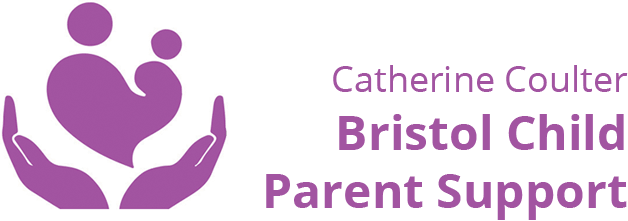The definition of trauma is when a child feels intensely threatened by an event they are involved in or witnessed. Research shows that adults exposed to multiple traumas as children were exponentially more likely to suffer from severe physical health, early illness, and mortality. Hence, it’s essential to start an intervention quickly. A holistic approach is often needed, which includes schools and other systems.
A child who has experienced trauma may present with various signs and symptoms that can manifest in different ways. It’s important to note that each child is unique, and their response to trauma can vary.
There are several ways in which a child may exhibit signs of trauma:
-
Behavioural changes: The child may exhibit changes in their behaviour, such as becoming withdrawn, avoiding certain activities or places, or displaying regressive behaviours (e.g., bedwetting, thumb-sucking) that they had previously outgrown. They may also become more irritable, aggressive, or have difficulty controlling their emotions.
-
Emotional distress: The child may experience intense and overwhelming emotions related to the trauma. They may exhibit signs of anxiety, fear, sadness, anger, or emotional numbness. They may have frequent mood swings or difficulty regulating their emotions.
-
Sleep disturbances: Trauma can disrupt a child’s sleep patterns. They may have difficulty falling asleep, experience nightmares or night terrors, or wake up often during the night. They may also resist going to bed or express a fear of being alone.
-
Changes in social interactions: The child may have difficulty forming or maintaining relationships with peers or adults. They may become socially withdrawn, avoid social situations, or display aggressive or disruptive behaviours. They may also have difficulty trusting others or have a heightened sense of vigilance and suspicion.
-
Academic difficulties: Trauma can impact a child’s ability to concentrate, focus, and perform academically. They may have difficulty paying attention in class, experience a decline in their academic performance, or have trouble completing tasks or assignments.
-
Physical symptoms: Some children may exhibit physical symptoms related to their trauma, such as headaches, stomachaches, or other unexplained physical complaints. These symptoms may not have a clear medical cause but can be linked to the emotional distress caused by the trauma.
-
Flashbacks or intrusive thoughts: The child may experience intrusive thoughts or memories related to the traumatic event. They may have flashbacks or vivid recollections of the event, which can be distressing and overwhelming.
-
Hypervigilance and heightened arousal: The child may display signs of hypervigilance, constantly scanning their environment for potential threats. They may have an exaggerated startle response, be easily startled, or frightened, or have difficulty relaxing or feeling safe.
It’s important to note that these signs and symptoms can vary depending on the child’s age, developmental stage, and individual coping mechanisms. If a child is exhibiting any of these signs, it is crucial to seek professional help from a mental health professional who specialises in working with children and trauma. They can provide appropriate assessment, support, and interventions to help the child heal and recover from their traumatic experiences.
Here are the different forms of trauma:
Medical Trauma
Children experience physical and psychological trauma due to pain, injury, serious illness, and medical procedures. This results from invasive or frightening treatment experiences. Trauma may occur in just one incident response or multiple medical events. Moreover, families present with children who’ve suffered from allergies, seizures, epilepsy, and other physical conditions. Consequently, they often present with anxiety and separation difficulties, resulting in emotional dysregulation.
Traumatic Grief
Many children adjust well to the death of a family member or close friend. Other children have ongoing difficulties that interfere with everyday life and make it difficult to recall positive memories. If your child’s severe or prolonged responses interfere with their functioning, your child may be experiencing Childhood Traumatic Grief.
Complex or Developmental Trauma
This generally occurs at home with a child’s primary caregiver. It describes childhood trauma, such as chronic abuse, neglect, or other harsh adversity in their homes. When a child is exposed to overwhelming stress and their caregiver does not help reduce it, the child experiences developmental trauma. Most clinicians are familiar with Post-Tramatic Stress Disorder (PTSD), but most traumatised children will not develop PTSD. Instead, they are at risk for complex emotional, cognitive, and physical illnesses that last throughout their lives. They need a holistic intervention where the adults around them understand that they tend to reenact their traumas behaviourally.
 Three types of Abuse:
Three types of Abuse:
1. Physical Abuse
Physical abuse is the most common form; I’ve spent 20 years in CAMHS working with children and families exposed to domestic abuse. It has a devasting impact, according to Woman’s Aid. One, one-in-seven (14.2%) children and young people under 18 will have lived with domestic violence at some point in their childhood. (Radford et al., 2011)
2. Emotional Abuse
The NSPCC define emotional abuse as the ongoing emotional maltreatment of a child. It’s sometimes called psychological abuse and can seriously damage a child’s emotional health and development. Emotional abuse can involve deliberately trying to scare or humiliate a child or isolating or ignoring them. Emotional harm is often underdiagnosed.
3. Sexual Abuse
A child is sexually abused when forced or persuaded to participate in sexual activities. It doesn’t have to be physical contact; it can happen online.
Please contact me if you are a professional or parent/carer seeking help to manage trauma.



